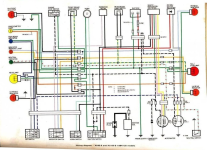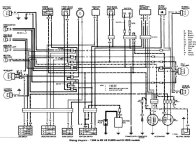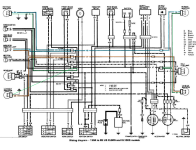unclejemima
100 W
I bought a Honda 1983 XL80 off a guy in the summer but it was missing all the street legal lights.
I bought a set of 6v signal lights off ebay and hooked them up. I have the signal lights working now! So that parts solved.
Only the dash indicator signal light indicators won't light up with the signal lights and I can't seem to figure out why.
Here's what I've tried already...
-Confirmed the indicator bulb is good.
-Checked all the wiring and connections in the and they all look good and well secured.
So...I'm not really sure where to look to solve this. I checked the wiring diagram (attached below) and I'm stumped on how the signal light dash indicators are wired...because it has what appears to be 2 power wires running to it. The light blue wire from the right side signal light power and orange wire from the left side signal lights power. How does that work???
Any advice would be greatly appreciated!


I bought a set of 6v signal lights off ebay and hooked them up. I have the signal lights working now! So that parts solved.
Only the dash indicator signal light indicators won't light up with the signal lights and I can't seem to figure out why.
Here's what I've tried already...
-Confirmed the indicator bulb is good.
-Checked all the wiring and connections in the and they all look good and well secured.
So...I'm not really sure where to look to solve this. I checked the wiring diagram (attached below) and I'm stumped on how the signal light dash indicators are wired...because it has what appears to be 2 power wires running to it. The light blue wire from the right side signal light power and orange wire from the left side signal lights power. How does that work???
Any advice would be greatly appreciated!






